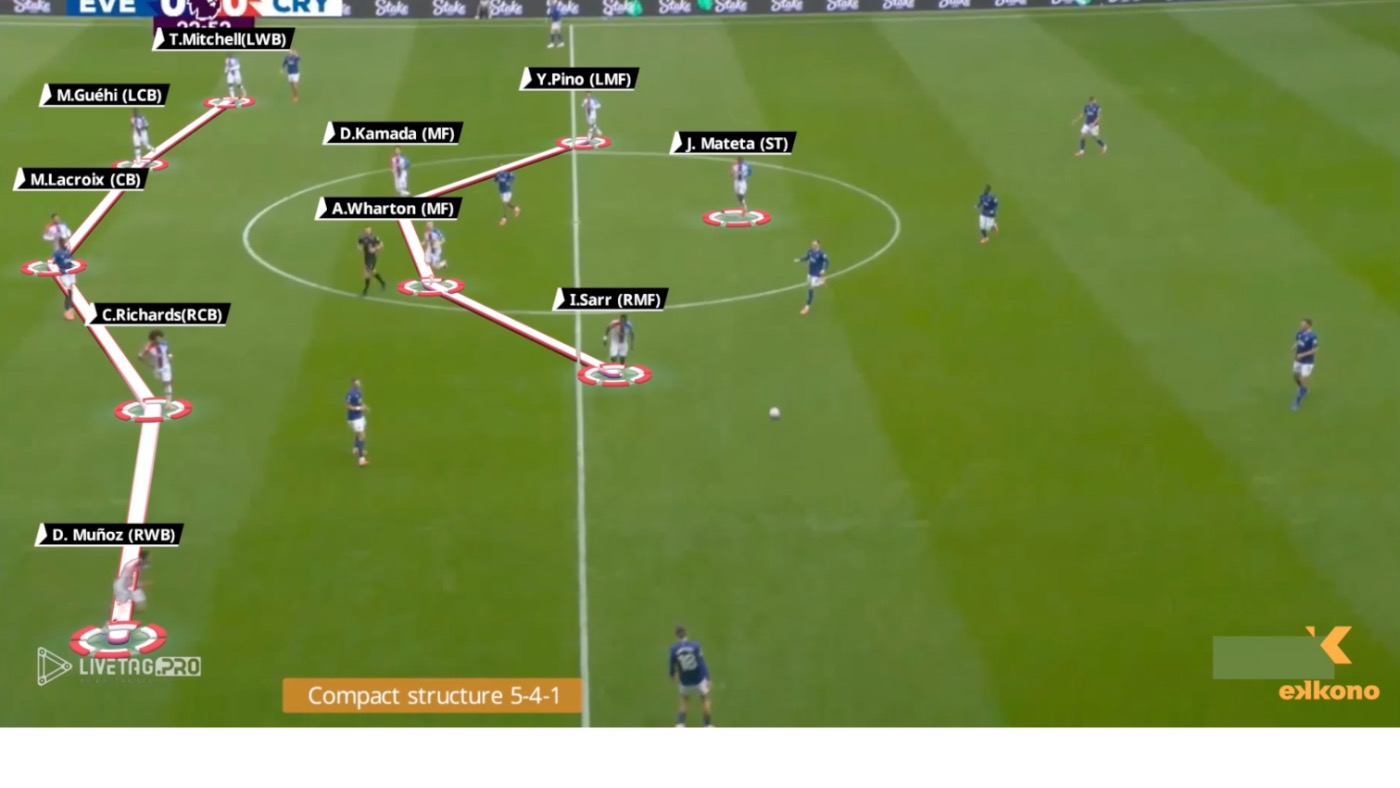
Introduction: Defensive Identity and Collective Discipline
Under Oliver Glasner, Crystal Palace have become one of the most tactically disciplined teams in the Premier League. Beyond their quick transitions, the Eagles show a remarkable understanding of compact defending, especially through their 5-4-1 structure.
This approach, which also played a key role in their recent cup success, emphasizes collective order, spatial control, and intelligent timing. It is a system where every player knows when to stay, when to jump, and how to react together. Let’s break down the main principles behind Palace’s compact 5-4-1 and what coaches can learn from it.
Back Three and Functional Wing-Backs in a Compact 5-4-1 Structure
Crystal Palace use a stabilised back line of three central defenders with complementary profiles: Marc Guehi acts as the positional anchor and organizer. Maxence Lacroix brings athleticism, speed, and depth coverage, while Chris Richards contributes strength and recovery ability.
On the flanks, Daniel Muñoz (right) and Tyrick Mitchell (left) perform crucial defensive tasks. They track back to provide cover, close wide channels, and prevent opponents from progressing through the wings.
As a result, the team maintains a compact mid or mid-high block with very short distances between players. This structure allows Palace to remain balanced, stable, and ready to press when the right moment comes.
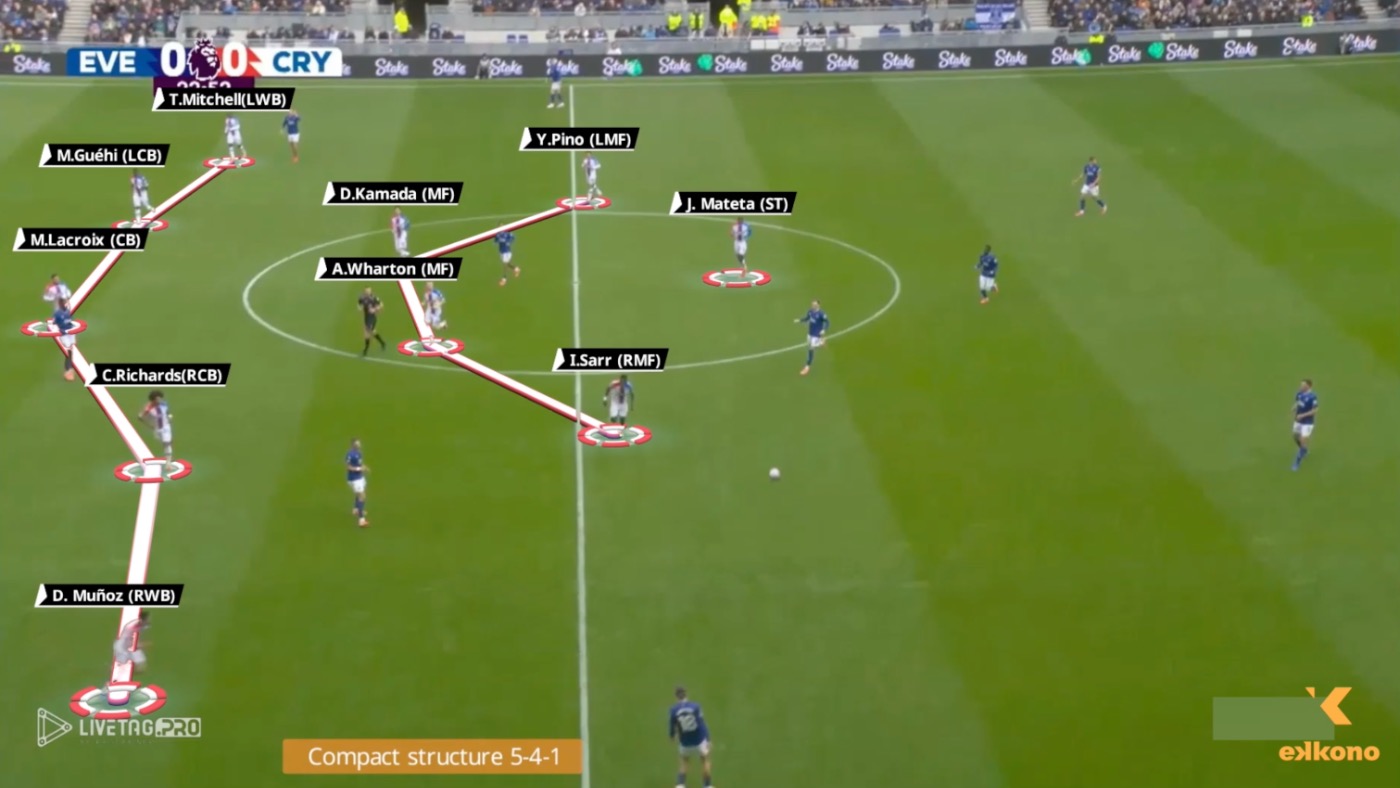
Crystal Palace: Compact 5-4-1 Structure I
Crystal Palace’s compact 5-4-1 defensive block under Oliver Glasner, with three central defenders and functional wing-backs maintaining horizontal and vertical compactness.
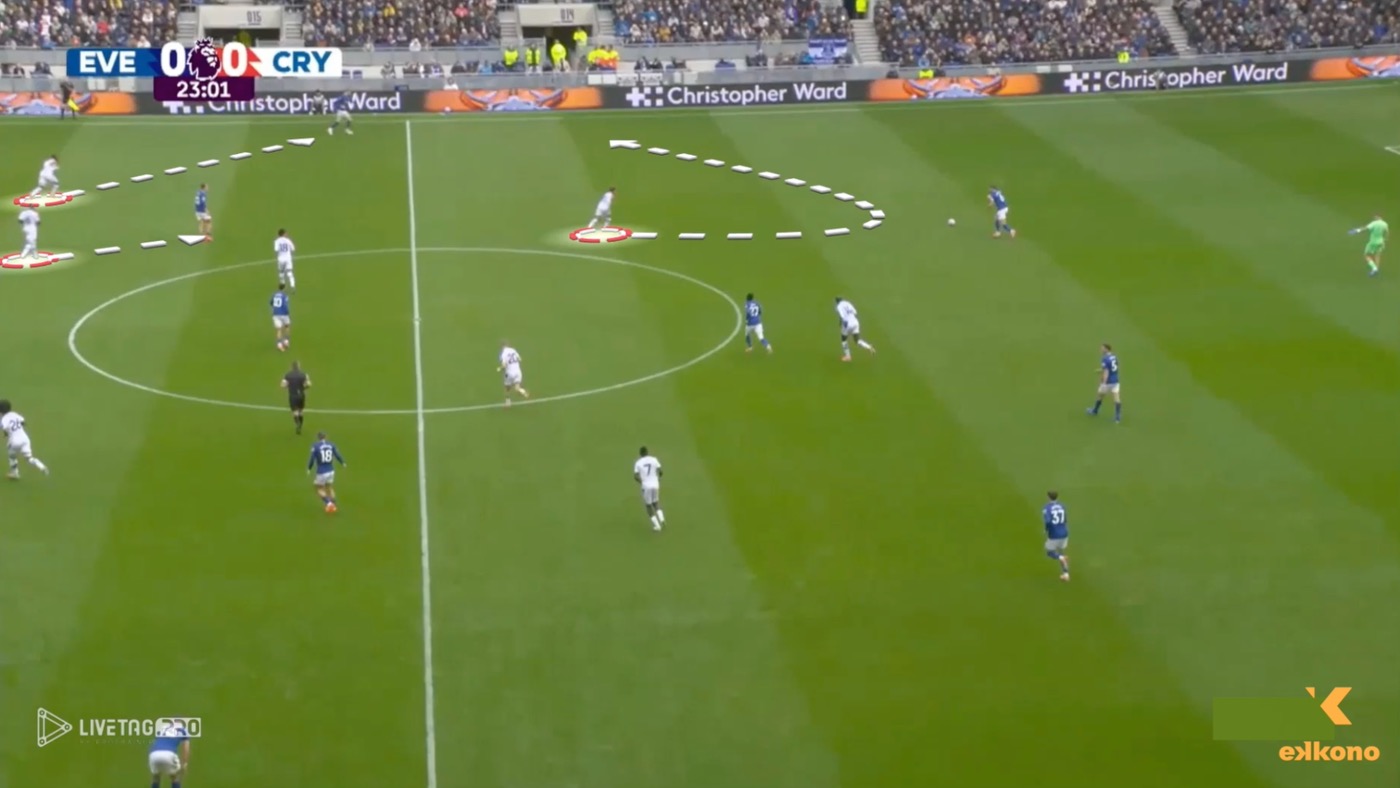
Crystal Palace: Compact 5-4-1 Structure II
Tyrick Mitchell (LWB) anticipates the pass to the winger and reduces the distance to close the gap, while his teammates closes the possible passing options.
Controlled Reactivity and Well-Defined Pressing Triggers
Rather than applying constant high pressure, Glasner’s team opts for controlled reactivity. Palace players wait for specific triggers to press, such as a pass played into the opposition’s interior midfielders, an opponent receiving with their back to goal, or a lateral switch toward a less-protected zone.
When the press is triggered, it happens in a coordinated and layered way. Each player’s movement connects with the next. However, if the ball is not recovered, the team quickly returns to its defensive shape. On the other hand, if possession is regained, Palace immediately look to launch a fast and vertical transition toward goal.
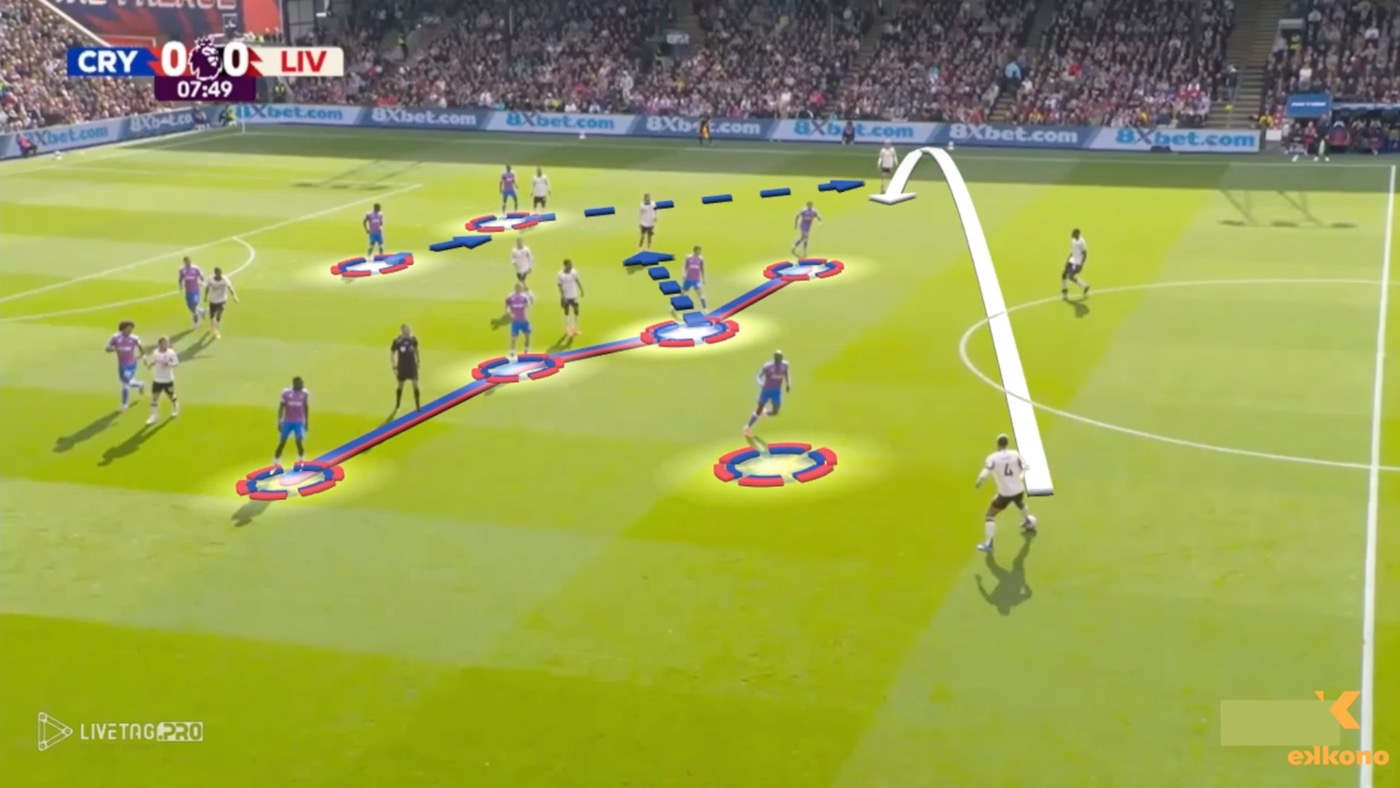
Crystal Palace: Pressing Triggers
Crystal Palace start to press Liverpool after the lateral switch toward a less-protected zone. Wing-back, winger and the closest central midfielder slide to the flank to create numerical superiority.
Central Protection and Control of Interior Corridors
Protecting the central axis is one of Glasner’s key priorities. The midfielders focus on blocking vertical passes and stopping progressions through the middle. This forces opponents to play wide, where Palace’s defensive density is higher and easier to control.
When the ball moves to the flank, the wing-back drops quickly and the nearest midfielder supports. Together, they form a small defensive triangle that limits short combinations and isolates the winger. In this way, Palace control both space and timing, dictating where the opponent can play.
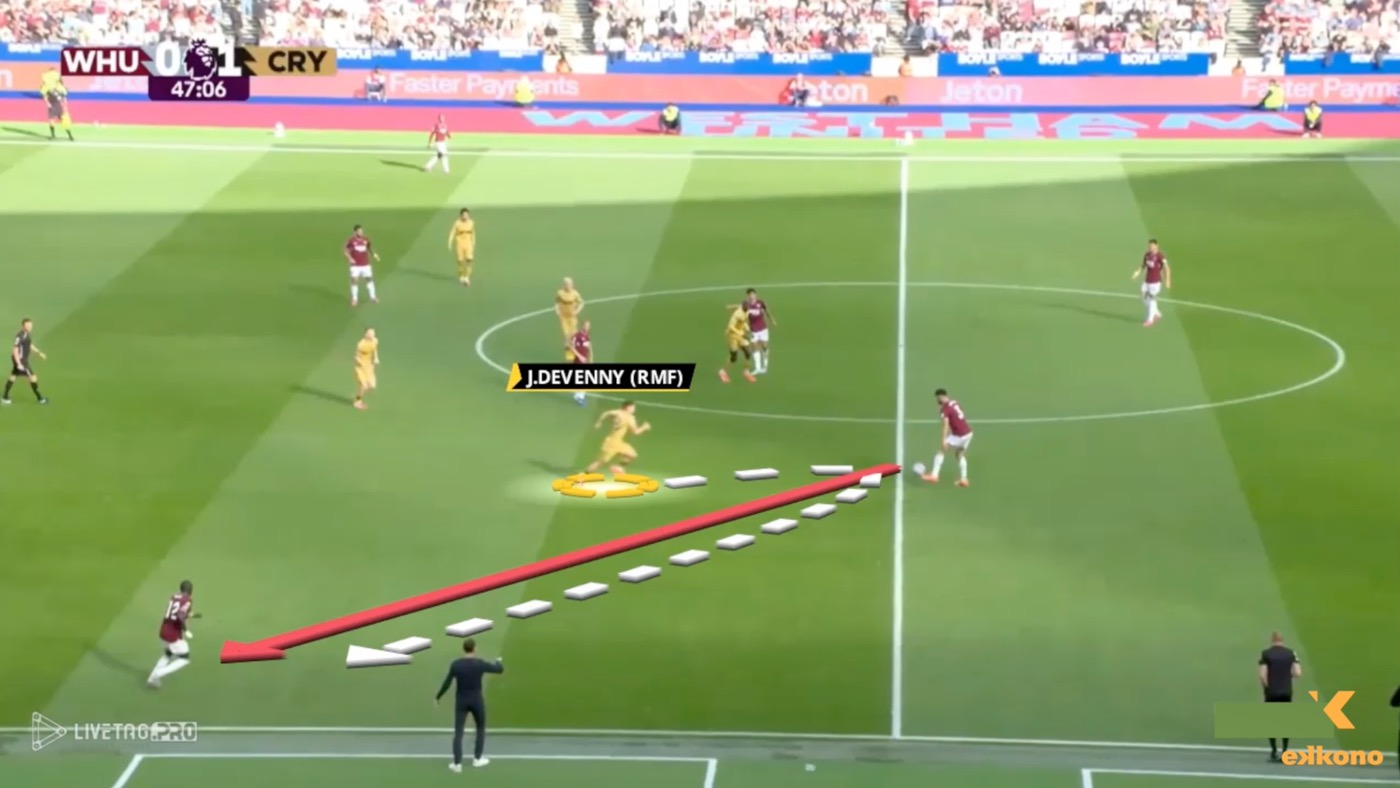
Crystal Palace: Central Protection I
Devenny (RMF) steps up to press the center back while blocking the vertical passing lane, forcing the opponent to play wide, and then tracks back to provide cover to the wing-back..
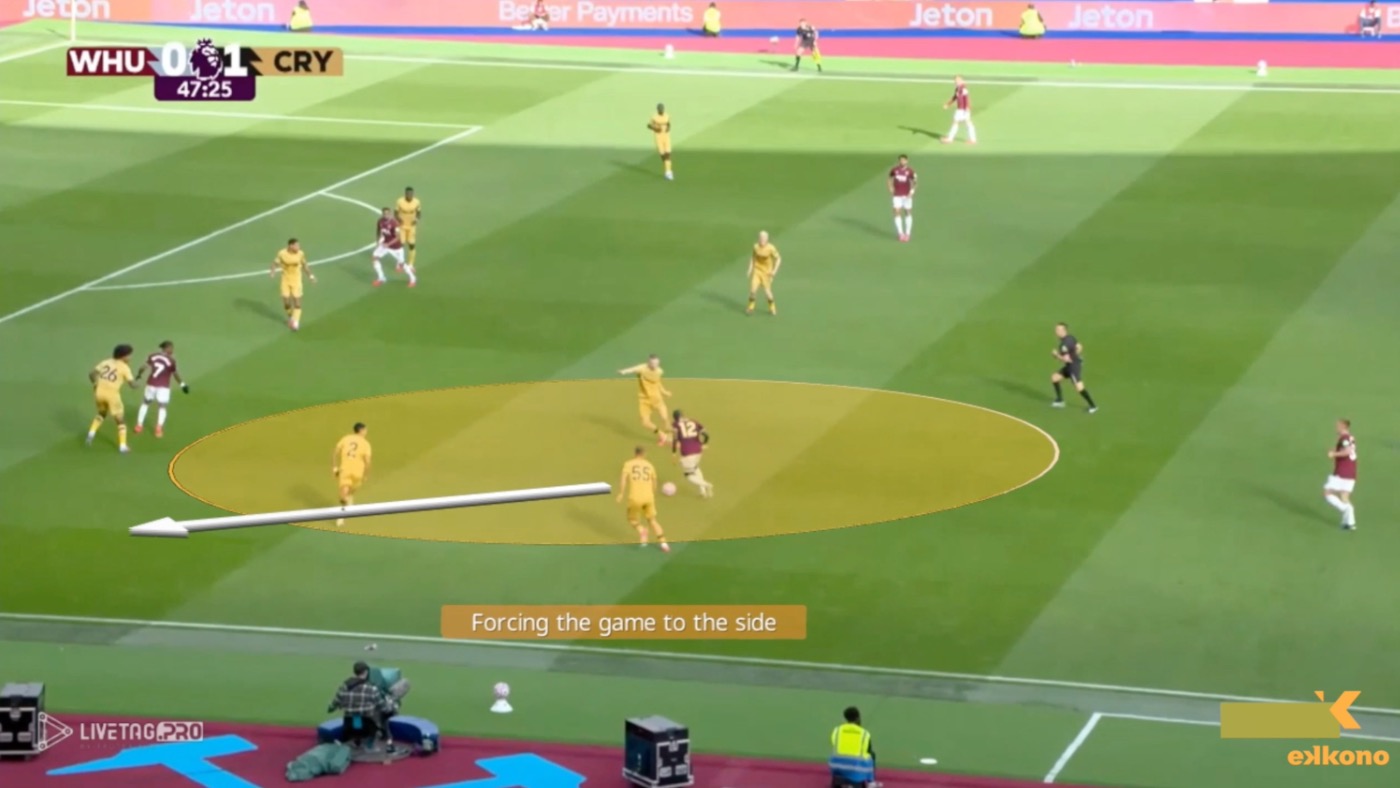
Crystal Palace: Central Protection I
Three Crystal Palace players create numerical superiority, forcing the opposing winger toward the sideline and limiting his passing options.
Compactness and Fast Transitions after Recovery
Crystal Palace concede very few spaces through the central lanes. By closing the interior corridors, they guide play toward the sides — where it is easier to trap and regain possession.
Upon recovery, the team immediately looks to exploit the central lanes left open by the opponent. This quick transition combines verticality with intelligent occupation of spaces between the lines.
It shows how the defensive phase under Glasner is not only reactive. Instead, it becomes the foundation for launching efficient and direct counterattacks that catch opponents unbalanced.
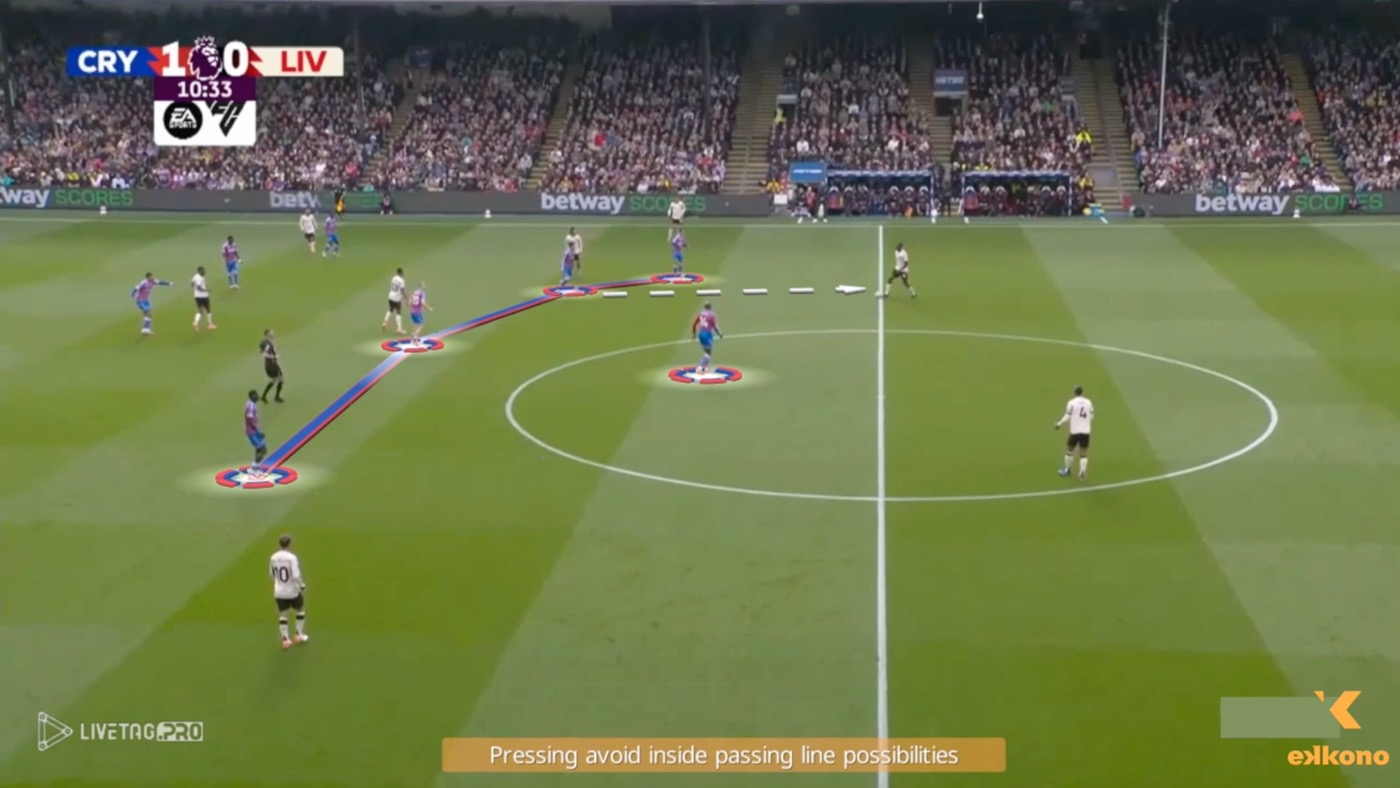
Crystal Palace: Compactness in the Axis I
The central midfielder from Crystal Palace steps forward to press the center-back while closing the vertical passing lane.
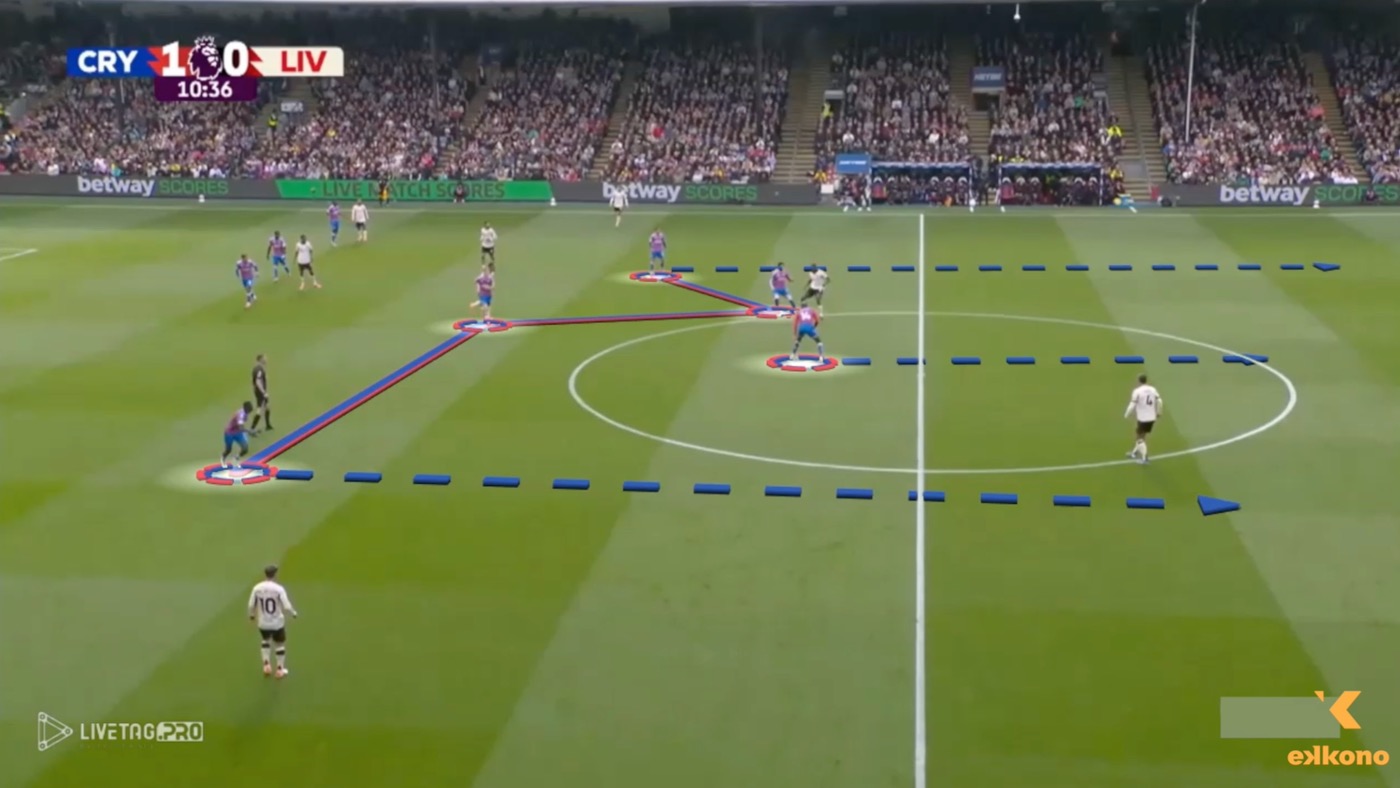
Crystal Palace: Compactness in the Axis II
After regaining possession, Crystal Palace immediately occupy and attack through all three attacking channels.
High Density Box Protection against Crosses
When the ball is wide, Palace’s defenders and midfielders make long, collective jumps toward the ball zone to protect the central area. This often forces opponents to rely on crossing situations.
Inside the box, Glasner’s side defends with high density and short distances between players, using their strength and positional awareness to dominate aerial duels. This collective coordination and physical power make it difficult for opponents to find clean finishing opportunities, often forcing low-quality or second-ball chances.
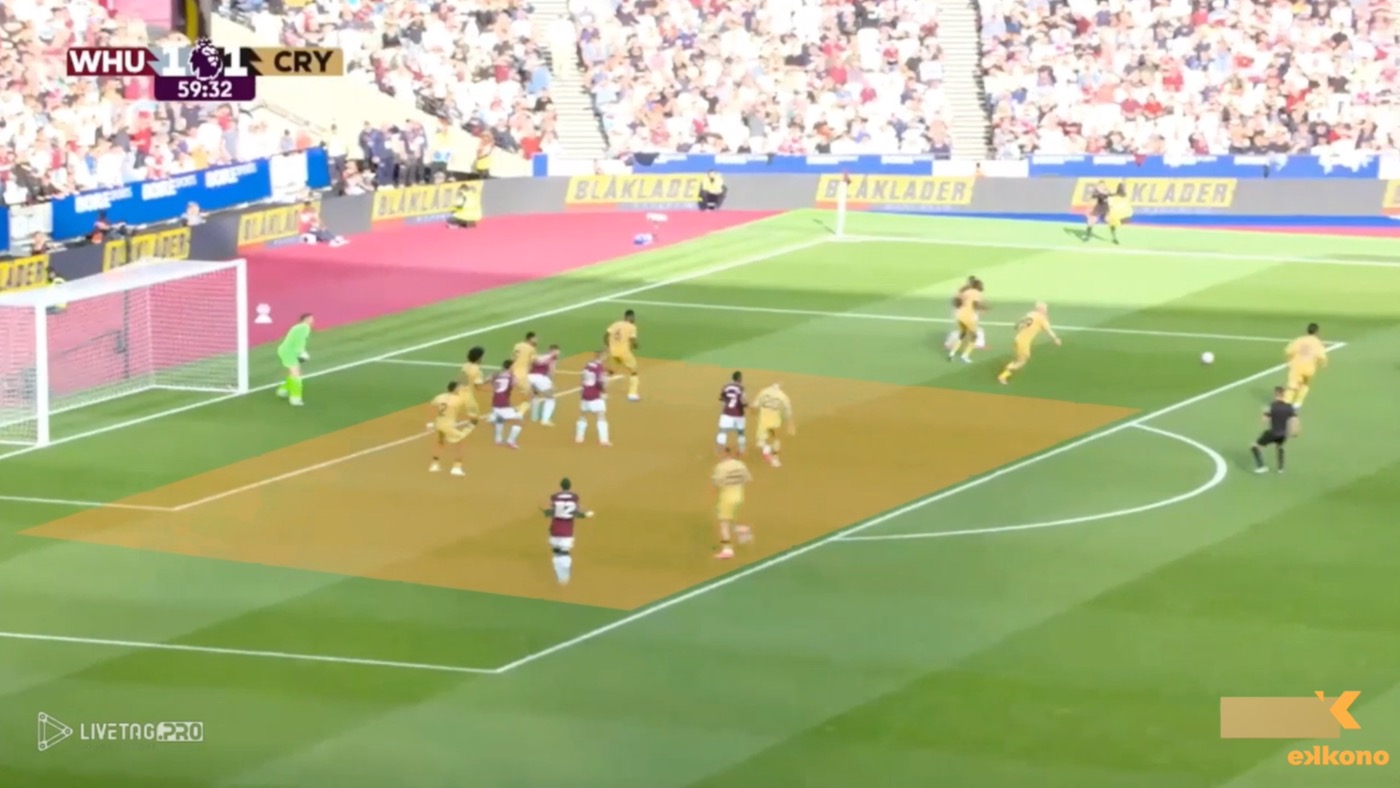
Crystal Palace: Compact Box Protection
Inside the box, Glasner’s Crystal Palace prioritize collective defending, forming a high-density area that enhances marking coordination and neutralizes crossing threats.
Conclusion: A Model of Collective Efficiency
Crystal Palace’s 5-4-1 under Oliver Glasner exemplifies how organization and collective discipline can compensate for individual differences. Their compactness, intelligent pressing, and quick transitions make them a reference for coaches aiming to build a defensively solid yet proactive side.
Their recent Cup victories highlight that defending well is not about being passive — it’s about controlling the rhythm of the game, forcing opponents into low-value areas, and being ready to attack the moment possession is regained.
For coaches at any level, Glasner’s Palace offer a clear blueprint for compact defending: balance, coordination, and the constant readiness to turn defense into opportunity.

